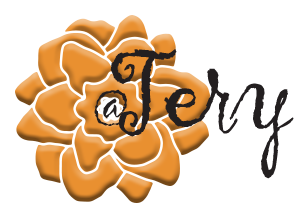 Most people won’t get this innovative form of storytelling, most people want a beginning, middle and an end to a story – that’s for the practically minded audience who likes things to be neatly wrapped up in the realm of normal. The OA does not offer a clear form of storytelling, and it lures the audience into an unnatural setting and gives unending participation. The outcome being that the viewers have a unique perspective on what is happening in The OA – exceeding traditional storytelling and going beyond entertainment – viewers will bring their own theories and their own beliefs to what’s happening in the story. It reminds me of Schrodinger’s Cat – no scientist observes the same thing in the Cat in the Box thought experiment.
Most people won’t get this innovative form of storytelling, most people want a beginning, middle and an end to a story – that’s for the practically minded audience who likes things to be neatly wrapped up in the realm of normal. The OA does not offer a clear form of storytelling, and it lures the audience into an unnatural setting and gives unending participation. The outcome being that the viewers have a unique perspective on what is happening in The OA – exceeding traditional storytelling and going beyond entertainment – viewers will bring their own theories and their own beliefs to what’s happening in the story. It reminds me of Schrodinger’s Cat – no scientist observes the same thing in the Cat in the Box thought experiment.
The multiverse is played out in three dimensions [at least in this season], the dream world, dreamer, and anchor world. What gaming geek couldn’t love these surreal levels to this multiplayer game? But there’s more to the game – there are the riddles, clues, patterns, and puzzles. All there to sort out to imagine what will happen. They are productive tools to move the audience along, not realizing there is no right or wrong answer. The dream world and dreamer is not black and white – problems are being solved and while new challenges appear. There is no being in control or being controlled. The mirrors give the most clarity by asking the characters to look and judge what is and what is not, who they are and who they are not, where they are and where they are not. The OA forces the audience to accept the notion that reality can be desacralized.
Every game gives the players [characters and audience] guides, guidance or go-it-alone help. OA2 the guides change as the OA shifts from OA to Nina to Prairie and to Brit. While Michelle and Karmin entering the house at different points in time alone – the house is the guide that gives the characters glimpses into who or what they are and will become with no right or wrong path – guidance is a tributed to knowing what’s needed and being open to evolving.
Season 1 of The OA left the audience’s limbic brain simulated and off balance. Season 2 of The OA, if following the rules of traditional storytelling, was supposed to correct the flight and fright response. Instead, The OA2 keeps the audience in the state of being overstimulated and juxtapositioned with obsession and impulsiveness.
Jung tells us, we share a collective unconsciousness, and we agree on a universal truth, in our present reality this concept can be shattered by the blindness, laziness, and willingness to give up to pseudo contrived forces – those conceived by the nemesis in the OA – Hap. Have you experienced that person who is constantly testing, controlling, deceiving and depriving you of your reality? Well, that is a Hap, a character whose vision of reality is only black and white, who selfishly needs you to only accept his form of reality. This character challenges us to look at our darkest self and cries for understanding – it is the primitive self – completely unevolved and vulnerable – not realizing it needs saving.
The OA isn’t a game it’s a thought experiment that forces the viewer to look outward and inward but beyond the everyday mirrors and screens. The OA embodies our zeitgeist. Waking up is imperative!
I look forward to participating in The OA season 3 where the storytelling will be more than entertaining it will be a multifaceted experience.

